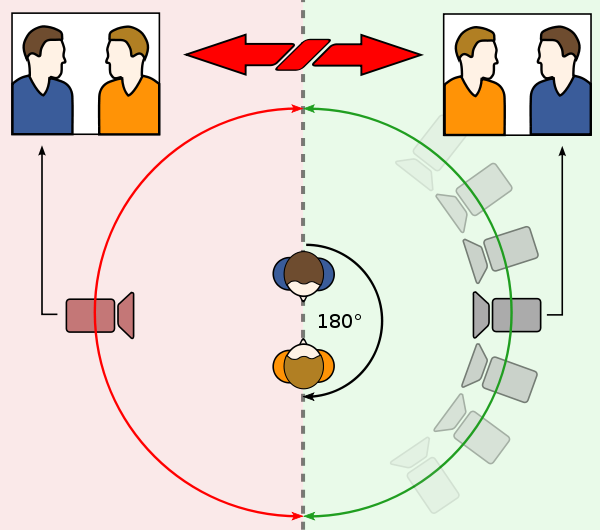SIGGRAPH attendees are a sophisticated audience, so demoing Pearl in the VR Village last week led to some really interesting conversations. One thing I heard more than once was this idea that to do storytelling in VR, we have to throw out all the rules of traditional cinema. While I appreciate the swashbuckling spirit of that sentiment, I don’t think it’s actually true.

I had a life drawing instructor in college who used to teach us rules like “highlights are circular, and shadows are triangular.” As a math major, this really bothered me at the time, because taken literally it was provably false– just give me a flashlight and a grapefruit and I’ll show you! But that was missing his point. The human body is made of smooth, convex masses, and the highlights on them do indeed tend to be round. And when one limb casts a shadow on another, the contour of the shadow’s edge wraps around and hits the silhouette at an angle, forming a sharp point. In other words, “triangular”. So my teacher’s rule, within the context of human figure drawing, was totally valid and actually pretty insightful. But it wasn’t a law of nature, it was something he invented. And to construct it, he had to synthesize knowledge from human anatomy, physics, geometry, and visual perception.
The rules of filmmaking seem atomic and universal to us, but they’re not. Like the “triangular/circular” rule, they’re chimaeras, hybrid creatures assembled from bits of wisdom from different disciplines. They’re not real the way math and biology are real, we’re just so used to them that we mistake them for reality.
 For example, take film’s 180º rule. That’s the rule that says if you’re shooting a conversation between two characters, there’s an imaginary line connecting them, and when you cut from shot to shot, you always have to keep the camera on the same side of it. Cross that line, and you risk confusing your audience. This rule has elements of geometry (projecting 3D space to a plane), perception (how humans construct mental models of 3D space) and psychology (how we organize those models based on relationships between people). That’s a lot of moving parts! Now imagine trying to apply this rule to a VR experience where you can walk around the scene. Some of those elements change (the flat screen becomes a volume) but the perception and psychology parts are still there. So the question is not whether to keep the 180º rule or throw it away. The question to ask is which parts do we keep, and what else do we add into the mix, to construct a new rule that works for VR?
For example, take film’s 180º rule. That’s the rule that says if you’re shooting a conversation between two characters, there’s an imaginary line connecting them, and when you cut from shot to shot, you always have to keep the camera on the same side of it. Cross that line, and you risk confusing your audience. This rule has elements of geometry (projecting 3D space to a plane), perception (how humans construct mental models of 3D space) and psychology (how we organize those models based on relationships between people). That’s a lot of moving parts! Now imagine trying to apply this rule to a VR experience where you can walk around the scene. Some of those elements change (the flat screen becomes a volume) but the perception and psychology parts are still there. So the question is not whether to keep the 180º rule or throw it away. The question to ask is which parts do we keep, and what else do we add into the mix, to construct a new rule that works for VR?
For VR storytelling, we shouldn’t have to throw out the rules of the mediums we know and love. But we can unpack them, dismantle them into their component parts, and analyze them at a deeper level than we’re used to doing. And that’s going to be a fun way to spend the next few years, for all of us.
